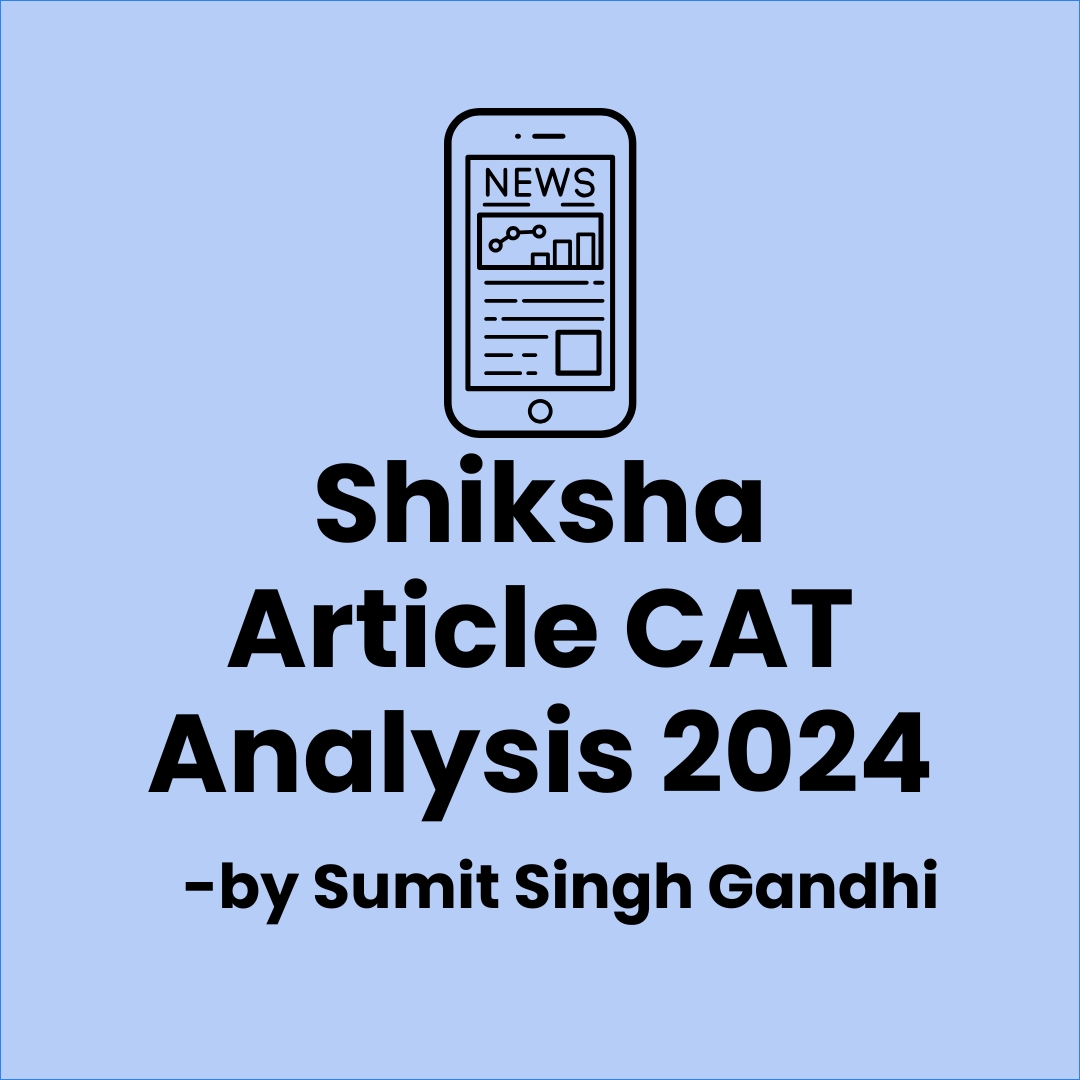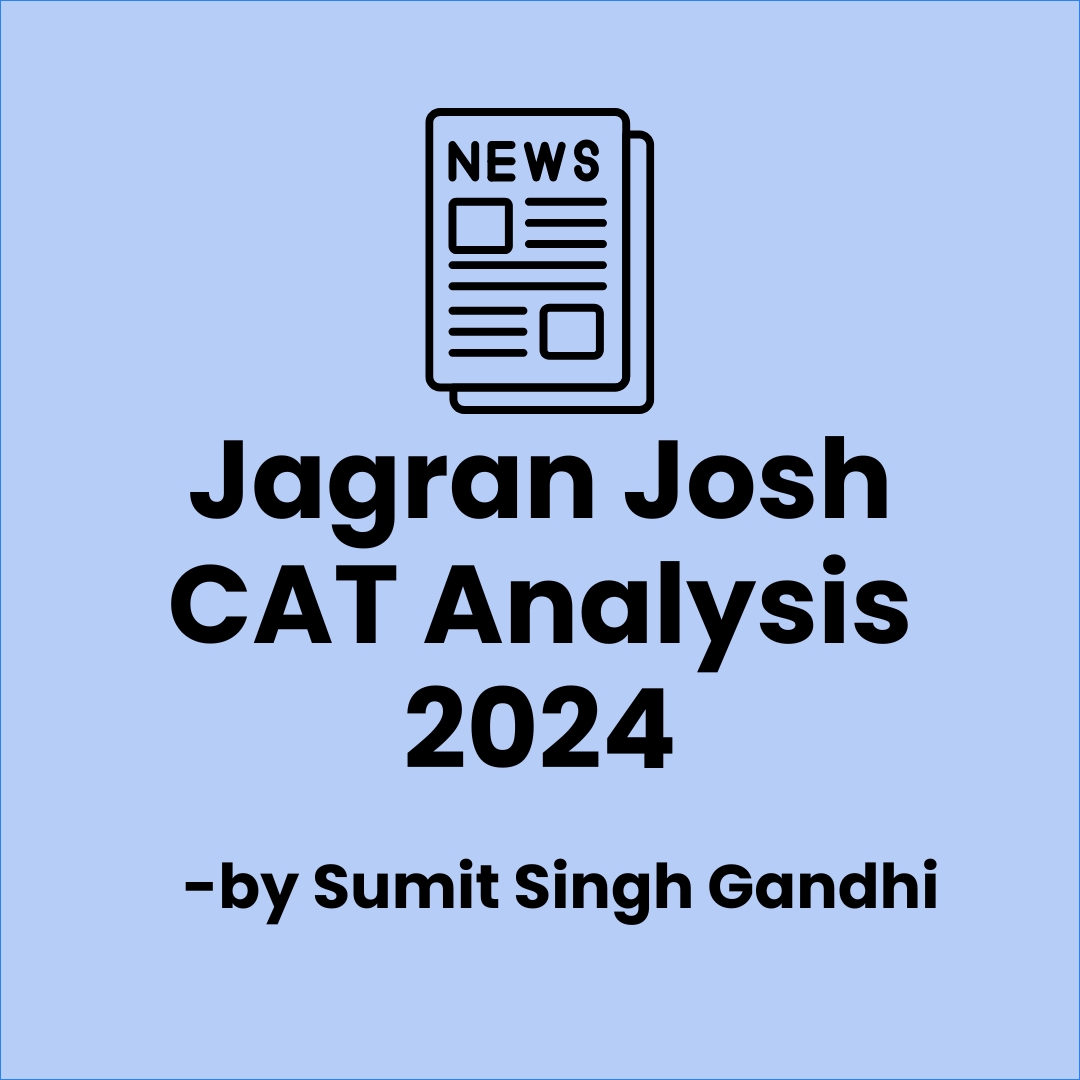The CAT 2025 exam is expected to take place on November 30, 2025, organized by IIM Kozhikode in online mode across 155 cities. Its scores will be accepted by 21 IIMs and over 1,200 B-schools across India for admission into postgraduate management programs. The official notification is likely to be released on the IIMCAT website (iimcat.ac.in) by the end of July 2025, with registration starting in the first week of August 2025. The notification will provide key details, including the exam date, registration schedule, admit card release, and result announcement, enabling candidates to plan their preparations and complete all exam-related steps on time.

CAT 2024 Exam Overall Analysis ( Slot 1 )
The CAT 2024 exam is scheduled for November 24, 2024, and will serve as a key step for admission to the 21 IIMs and top MBA colleges across India. IIM Calcutta will be conducting this year’s exam. As per the official CAT notification released on July 28, 2024, the registration process will open on August 1, 2024, and close on September 20, 2024.
First-Cut Analysis of Slot 1:
The Common Admission Test (CAT) 2024 recorded 3.29 lakh registrations, a marginal dip compared to the 3.30 lakh registrations in 2023. This 0.30% decline, amounting to roughly 1,000 fewer candidates, indicates steady yet slightly reduced participation. Despite this minor decrease, the competition remains fierce, and the first slot of CAT 2024 showcased a mix of traditional rigor and fresh challenges.
This year, CAT introduced a slight tweak in its structure, increasing the total number of questions from 66 to 68. Slot 1 was broadly perceived as moderate overall, with significant variations in difficulty levels across sections. While the Verbal Ability and Reading Comprehension (VARC) section emerged as the most challenging, Quantitative Ability (QA) offered considerable relief. Meanwhile, the Data Interpretation and Logical Reasoning (DILR) section struck a balance between complexity and scoring potential.
CAT 2024 Slot 1 Remark:
CAT 2024 there were a total of 68 questions divided among Verbal Ability and Reading Comprehension (VARC), Data Interpretation and Logical Reasoning (DILR), and Quantitative Aptitude (QA). Sectional Break up: Verbal (22), DI LR ( 22), Quants (22) questions.
The VARC section, consisting of 22 questions, stood out for its difficulty. A surprising change this year was the absence of Para jumbles, a long-standing feature. Instead, the section relied heavily on Reading Comprehension (RC), with four relatively lengthier passages. Among these, one RC was deemed straightforward, while others explored nuanced themes like craftsmanship impacted by artificial intelligence, extinct animal-mouse, and a Netflix-related topic. These required careful analysis and strong comprehension skills. Many candidates found VARC to be the most grueling section, testing their reading speed and interpretive ability
The DILR section offered a balanced challenge with 22 questions. It comprised three Data Interpretation (DI) sets, each containing four questions, and two sets, each featuring five questions. The DI sets explored topics like a Stock Market Candle Chart (where formulas were provided), a Set Theory puzzle involving group travel patterns, and a Star Distribution puzzle assigned to judges. The LR sets demanded methodical and strategic thinking, rewarding those who maintained focus under pressure. Candidates who accurately solved three sets were well-positioned to secure stellar percentiles.
In contrast, the QA section provided much-needed relief. Like VARC, it featured 22 questions, predominantly focused on formula-driven problems from familiar topics such as Time, Speed, and Distance (TSD), Profit and Loss, Roots, and Ratios. Arithmetic contributed the lion’s share with 9-11 questions, while Algebra was straightforward, Geometry had minimal presence, and Modern Mathematics was limited to a problem on Sequence and Series. Notably, there were no questions on Permutation & Combination or Probability, further reducing the section's complexity. Well-prepared candidates found 14-15 attempts comfortably achievable, making QA the most approachable section of the exam.
Overall Difficulty Level: Easy to Moderate
The overall difficulty level of the CAT 2024 exam was on the easier side. With 68 questions spread across 3 sections, candidates found it manageable to attempt a good number of questions. The key sections were:
VARC (Verbal Ability and Reading Comprehension) - Toughest
QA (Quantitative Ability) - Easy to Moderate
DILR (Data Interpretation and Logical Reasoning) - Moderate
Section-wise Breakdown:
1. VARC: Toughest Section
This section presented the most challenging for students.
Reading Comprehension (RC): There were 4 RCs in total, each with varying levels of difficulty.
RC 1: Doable and straightforward
RC 2: Odd one out question
RC 3: Para completion
RC 4: Para summary
There were no para-jumbles this year, which might have given some relief to students.
Strategy for VARC: The key to doing well in this section is improving your reading speed and comprehension. Since the RCs were of varying difficulty levels, practicing different types of RCs and mastering techniques like scanning and skimming through the text can help you improve your speed and accuracy.
2. QA: Easy
This section was manageable for most candidates, with a good number of direct formula-based questions.
Key Topics:
TSD (Time-Speed-Distance)
Profit & Loss
Roots
Ratios
Arithmetic: The majority of questions in this section were from Arithmetic, around 9-11 questions.
Algebra: The algebra questions were easy, with no complex setups.
Geometry: There were only 2 questions in this area, and they were straightforward.
Modern Maths: Sequence and series questions were included, but Probability and Combinatorics (PnC) were absent.
Strategy for QA: Focus on mastering the basic formulas in Arithmetic, Profit & Loss, and Ratios. These topics were heavily tested, so practice solving questions quickly and efficiently. Make sure you’re comfortable with concepts like time-speed-distance and roots as
3. DILR: Moderate
The Data Interpretation and Logical Reasoning (DILR) section in CAT 2024 offered a well-balanced challenge, comprising a total of 20 questions. The section was divided into five sets, with a mix of Data Interpretation (DI) and Logical Reasoning (LR) sets, each with varying levels of difficulty.
DILR Set Breakdown:
- Three Data Interpretation (DI) Sets: Each containing 4 questions.
- Two Logical Reasoning (LR) Sets: Each contains 5 questions.
The DI sets explored a range of interesting and practical themes:
- Stock Market Candle Chart: This set involved interpreting a stock market chart with provided formulas, requiring candidates to carefully analyze the data and apply mathematical reasoning.
- Set Theory Puzzle: Focused on group travel patterns, this set involved logical reasoning to deduce relationships between various travel groups.
- Star Distribution Puzzle: This set involved distributing stars among judges, testing logical deduction and attention to detail.
The LR sets required methodical and strategic thinking, rewarding those who maintained focus under time pressure. The LR puzzles involved patterns, sequences, and logical deductions, making it essential for candidates to approach these sets with a systematic problem-solving mindset.
Strategy for DILR: For DILR, it’s crucial to practice a variety of question types. Work on your Data Interpretation skills (charts, tables, and graphs), as well as Logical Reasoning (puzzles, seating arrangements, and series). With regular practice, you’ll develop the ability to quickly identify patterns and solve problems efficiently.
Key Takeaways for CAT 2024 Preparation
Based on the CAT 2024 exam analysis, here are some important takeaways for your future preparation:
Master Core Topics in QA: Since Arithmetic, Profit & Loss, and Ratios were heavily tested in the QA section, focus on mastering these topics. Once you’re comfortable with the basic formulas, you’ll find the QA section much easier.
Improve Your RC Skills in VARC: Since Reading Comprehension made up a large part of the VARC section, improving your reading speed and comprehension is essential. Practice with different types of RCs and work on summarizing paragraphs to save time during the exam.
Practice DILR Regularly: DILR requires regular practice with both Data Interpretation and Logical Reasoning. Work on different sets to improve your problem-solving speed and accuracy.
Don’t Skip Geometry and Modern Maths: While there were only a few questions on Geometry and Modern Maths, these topics can sometimes have tricky questions. It’s best to revise them regularly so you don’t miss out on easy marks.
Time Management is Key: Even though the exam was of moderate difficulty, managing your time well is crucial. Don’t spend too much time on any one question. Try to attempt as many questions as possible without compromising on accuracy.
Finale Slot 1 vs 2 vs 3: Live at 9:00 P.M
Final Thoughts:
CAT 2024 Slot 1 presented a comprehensive blend of challenges across VARC, DILR, and QA. Aspirants navigated through intricate passages, tackled challenging logical scenarios, and grappled with a diverse range of quantitative problems. The analysis provides a holistic view for aspirants to reflect upon their performance and strategize for future attempts.
Stay tuned for more detailed analyses and insights as we continue to decode the layers of CAT 2024. Wishing all CAT aspirants the best in their preparations and future endeavors!
For expert guidance and personalized preparation, CATKing is here to help you ace the CAT. Join our coaching programs to get the best strategies, mock tests, and doubt-solving sessions to ensure you're ready for the next challenge!
All the Best to all MBA Aspirants!
PR Articles:
- Hindustan Times: CAT 2024 Live: IIM CAT slot 1 paper analysis for VARC, DILR, QA shared by experts- Shared By CATKing
- Shiksha Article: CAT 2024 Analysis, Expected Cutoff by CATKing (Available)- Shared By CATKing
- The Indian Express: CAT 2024 Live Updates: Cut off to be high for slot one exam, claims experts- Shared By CATKing
- Jagran Josh: CAT 2024 Slot 2 Exam Analysis: First Impression, Paper Review, Difficulty Level, Good Attempts- Shared By CATKing







